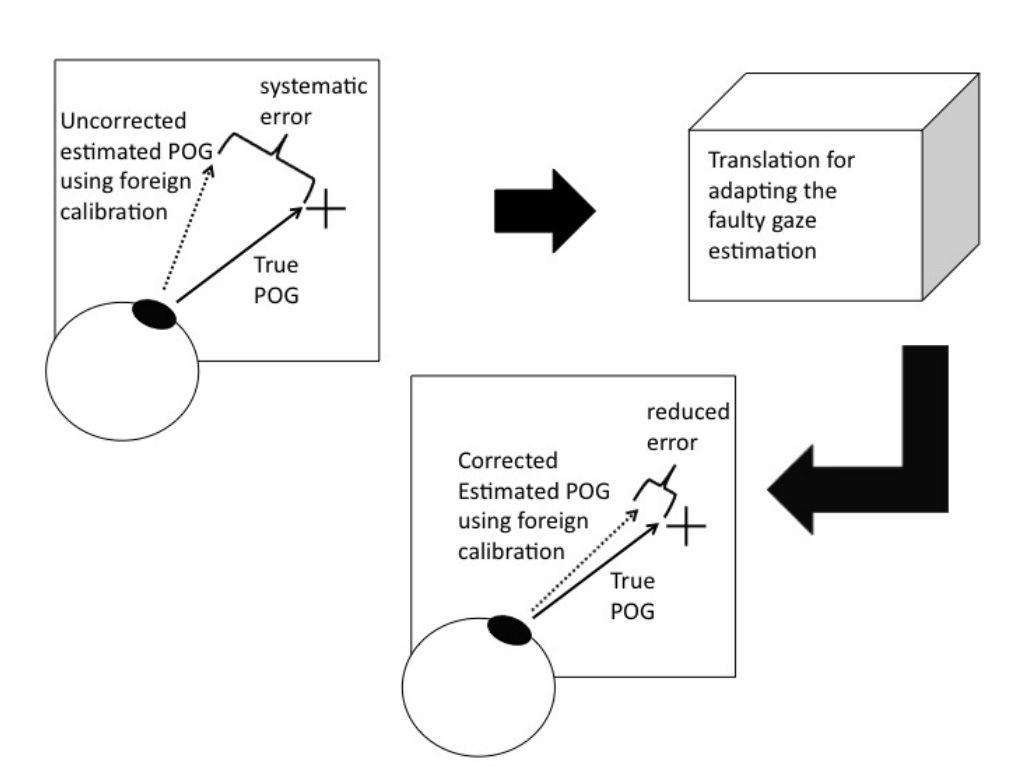Analysing the Potential of Adapting Head-Mounted Eye Tracker Calibration to a New User
Benedict Fehringer, Andreas Bulling, Antonio Krüger
Proc. ACM International Symposium on Eye Tracking Research and Applications (ETRA), pp. 245-248, 2012.

Abstract
A key issue with state-of-the-art mobile eye trackers, particularly during long-term recordings in daily life, is the need for cumbersome and time consuming (re)calibration. To reduce this burden, in this paper we investigate the feasibility of adapting the calibration obtained for one user to another. Calibration adaptation is automatically performed using a light-weight linear translation. We compare three different methods to compute the translation: "multi-point", where all calibration-points are used, "1-point", and "0-point" that uses only an external parameter. We evaluate these methods in a 6-participant user study in a controlled laboratory setting by measuring the error in visual angle between the predicted gaze point and the true gaze point. Our results show that, averaged across all participants, the best adapted calibration is only 0.8° (mean) off the calibration obtained for that specific user. We also show the potential of the 1-point and 0-point methods compared to the time-consuming multi-point computation.Links
Paper: fehringer12_etra.pdf
BibTeX
@inproceedings{fehringer12_etra,
author = {Fehringer, Benedict and Bulling, Andreas and Kr{\"{u}}ger, Antonio},
title = {Analysing the Potential of Adapting Head-Mounted Eye Tracker Calibration to a New User},
booktitle = {Proc. ACM International Symposium on Eye Tracking Research and Applications (ETRA)},
year = {2012},
pages = {245-248},
doi = {10.1145/2168556.2168607}
}

